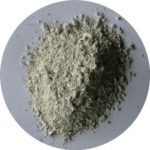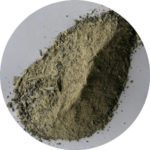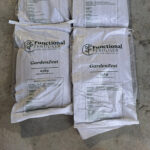PW Burton
Two reports just released reviewing New Zealand’s environmental performance, (OECD and GLOBE NZ) have both called for a substantial reduction in animal livestock numbers.
Prime Minister Bill English has stated that the Government has no intention of demanding the one third cut called for in the reports.
And that’s the best possible position because in our view it’s not the number of animals that’s the problem.
Nor is pastoral farming in general the cause of excessive greenhouse gas (GHG), and Nitrate-N entering streams, rivers, and groundwater, it’s the way it’s being carried out by so many farmers that is the issue.
Pastoral farming is currently seen, with justification, as the environmental villain, but with the implementation of some simple kiwi ingenuity it can be the process by which NZ is able to meet its 2030 commitments under the November 2016 ratified Paris Agreement.
The recent OECD environmental performance review stated that New Zealand’s growth model has reached its environmental limits, with increased GHG’s, freshwater contamination and loss of biodiversity now at unsustainable levels.
Dairy farming is singled out as a significant contributor with the remedy being a reduction in animal numbers. It’s a sensible and logical conclusion if in fact the basis of the argument on which it is founded is correct.
However consider the situation where pastoral farming, particularly intensive low land farming, reduces the concentrations of atmospheric CO2 by releasing oxygen into the atmosphere while storing carbon in the soil.
Carbon when sequestered in the soil in a stable form, commonly known as humus, provides a highly effective filter largely eliminating excess Nitrate-N, phosphorus, and other nutrient losses entering groundwater.
With every 1% increase in soil carbon an extra 144,000 litres of water can be stored, and used by plants providing an increase in total pasture growth.
So summer production can be lifted, less irrigation is required and nutrient loss is further reduced.
And the process is simple with minimal adjustment to stocking rates, and when a reduction in animal numbers is necessary total farm production lifts. The transition time may take as long as three years however astute managers make the change more rapidly.
Understanding the grazing principles that maximise the performance of permanent pastures are also those that ensure highest per animal production, and when implemented less total feed is required for maintenance and more becomes available for production.
The system now being practiced by an increasing number of farmers is founded on the widely accepted replacement of nutrient model using regular soil testing in New Zealand laboratories.
Phosphorus and sulphur are essential inputs with potassium applied as required using well-founded and long-used nutrient removal models. A recent farmer convert stated that the process was far closer to conventional than he expected.
The difference lies in the use of fertiliser nitrogen. Nitrogen is a component of protein, and protein production is the essence of pastoral farming; the reason for the consumption of both milk and meat.
Nitrogen makes up 78% of the air that we breathe and therefore a limitless supply is accessible. However to make sufficient nitrogen plant available to maximise pasture growth requires substantial amounts of energy.
Under the present conventional farming model that energy comes from natural gas and is converted under the Haber-Bosch process to manufacture urea. Currently over 700,000 tonne is applied annually to this country’s best land with the ‘average’ dairy farm applying close to 400kg/ha each year.
The properties implementing a Functional Farming system do not apply urea although they may apply a small amount of nitrogen in a different form in autumn and winter. Typically less than 30kg N/ha is applied annually.
The balance of the nitrogen required to maximise pasture growth comes primarily from clover, as it has for the last 150 years. The breakthrough has come from a better understanding of the conditions that favour the fixation of nitrogen by rhizobia on the root of clovers.
These conditions are also those that favour the fixation of nitrogen direct from the atmosphere and with detailed measures from the last ten years the system has been shown to be remarkably resilient and genuinely sustainable.
A shift in seasonal growth does occur with a little less pasture grown in August, September, and October. Comparative data shows 17% less grown in that period, however 74% more was grown over the months of Nov, Dec, and January, 55% more over February March and April, with a total gain of 25% for the twelve month period from 1st of June to the 31st May.
A detailed cost analysis shows the Functional Fertiliser inputs costing a little less than a conventional nutrient programme for an intensive dairy operation where 160kgN/ha is applied annually. For more information contact Peter on 0800 843 809.




